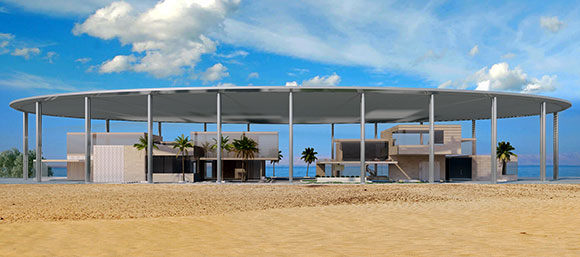#210: RED SEA LIVING
(Rendering by Poon Design / Lucas Ruzbasan)
At the northern tip of the Red Sea, east of Egypt, south of Jordan, an ambitious region of industry, global trade, recreation, and housing has been underway. For this newly planned community, Poon Design was invited to provide design concepts for five residential prototypes, to be mass produced throughout the neighborhood. From the archives, I share our 2019 studies that explore new ideas in the architecture of grand private estates. In this West Asian and Middle Eastern context, how is a house a home?
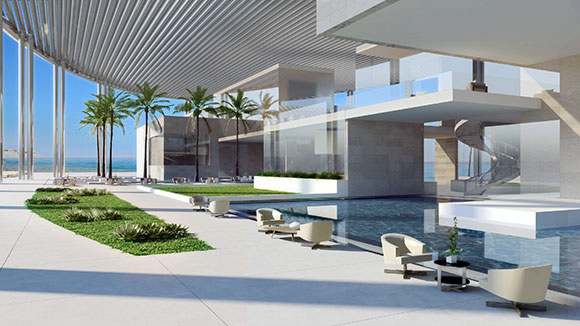
Modern Umbrella: Under a giant sunshade, this 85,000-square-foot residence serves an extended family. Our ‘umbrella’ protects residents from the harsh desert conditions, providing indoor/outdoor areas with the genius loci of community. The composition of the residence, an informal collection of rectilinear volumes, expresses an improvised village organized beneath the unifying canopy.
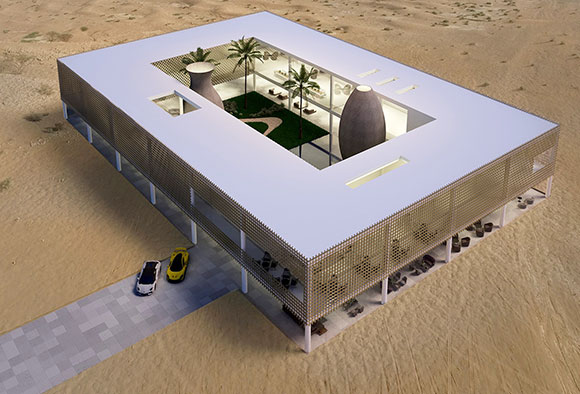
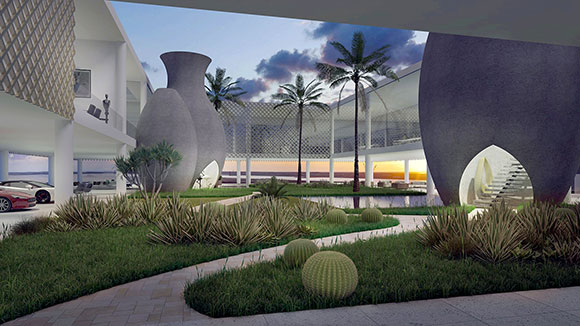
Quad of Pilotis: The rectilinear ring of upper level rooms raised on 16-foot tall columns—ala Le Corbusier’s “pilotis”—implies a courtyard. Open on four sides at ground level, this central quad connects to its dramatic surroundings of sand and sea, offering cross ventilation as well. Within this quad, the large enigmatic forms are inspired by Islamic pottery and contain family areas, meditation space, exercise zones, stairs, and elevator. Much of the 26,000-square-foot estate is located on the second floor, where rooms and hallways alternate between the exterior glass viewing to the abundant hills and the internal glass viewing into the central court.
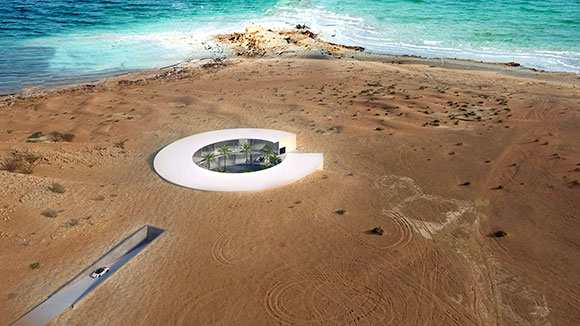
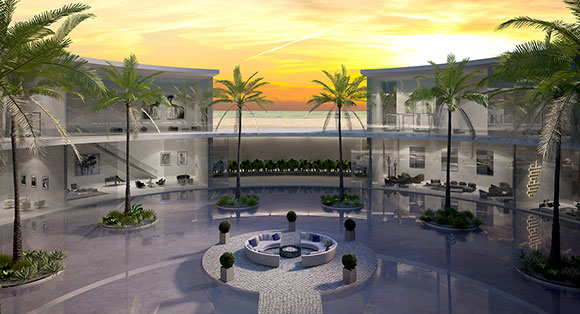
Home as Earthwork: As an incomplete circular form, the 55,000-square-foot design provides privacy, shade, and security, with a framed view to the Red Sea. Inspired by the Earthworks and Land Art movement of the 60s, this residence is an elemental shape nestled into the earth, entered by an automobile ramp and tunnel carved into the desert sand. The two-story residence wraps around a central piazza of water with a recreational platform floating in a large reflecting pond and swimming pool.
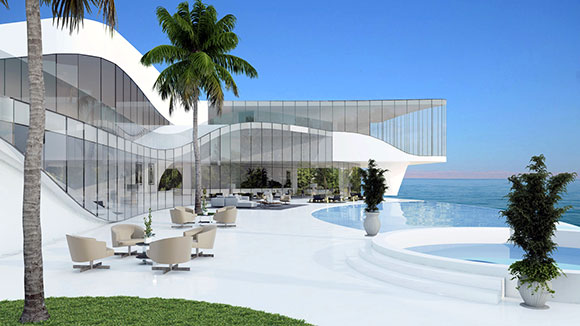
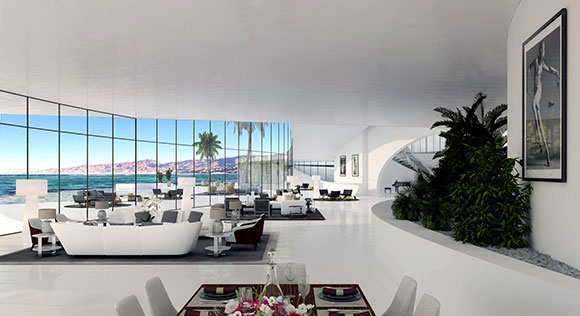
House Makes Waves: Recalling the ocean waves, sculptural forms sweep through and around the 24,000-square-foot sculptural residence. Curving walls, sloping floors, and lifting ceilings imply domestic areas, indoor and outdoor. Expansive glass panels bring in panoramic views to the exterior setting. Such abundant transparency defers to the white sloping planes, allowing the overall expressive shape of the house to be read.
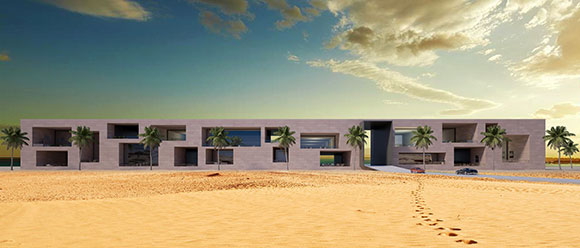
A Straight Line: 80,000 square feet of residence is captured within the simplest of architectural gestures, that of a single straight line. Deep set windows and doorways, outdoor family spaces, and private terraces are carved into the monolithic rectilinear building, providing a rhythmic façade against the vast monotony of sand.


